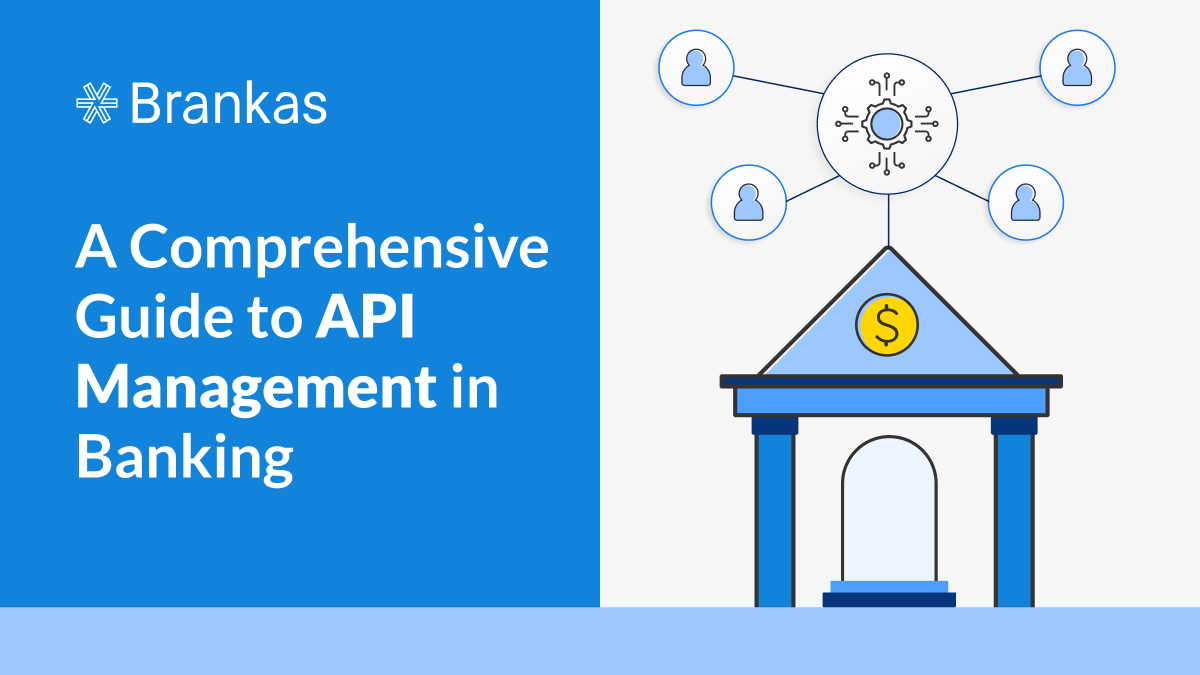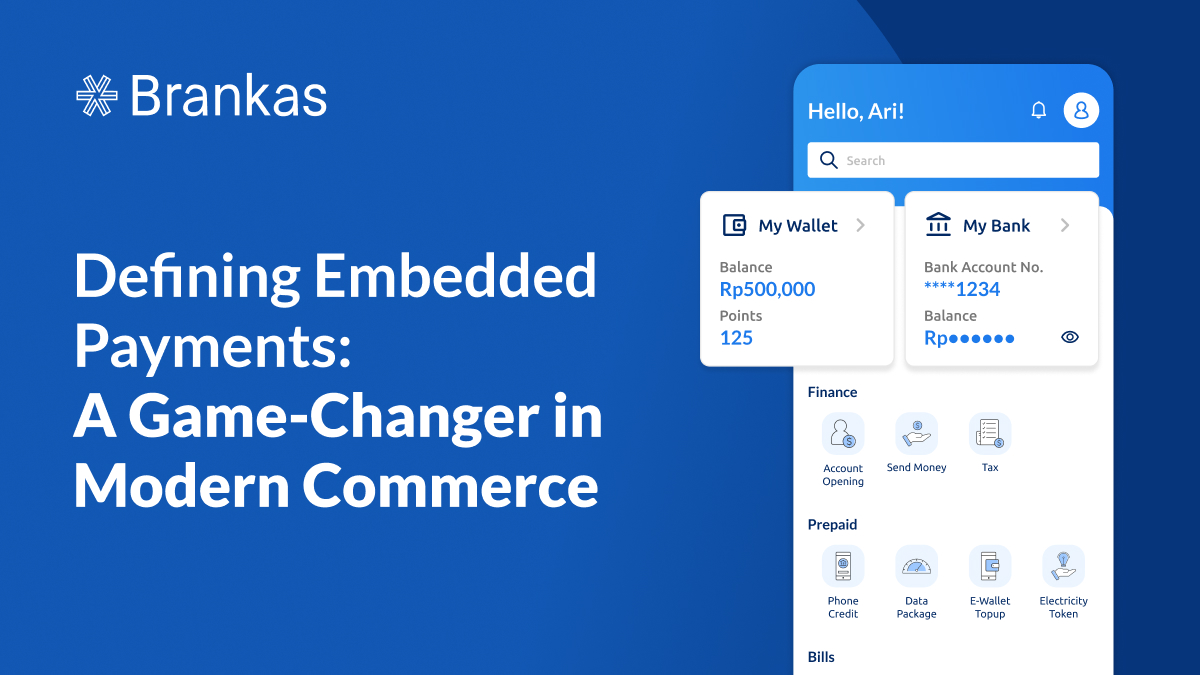Defining Embedded Payments: A Game-Changer in Modern Commerce
Subtle yet significant changes are reshaping how we engage in transactions. Gone are the days of laborious payment processes; today, we take seamless, effortless transactions for granted. But have you ever wondered about what makes this possible? It is called embedded payments. It is a part of the daily lives of almost everyone, and it is worth exploring how this unassuming technology has quietly transformed business.
From ordering your favorite coffee to booking a dream vacation, embedded payments are quietly reshaping how we interact with businesses. They enhance the customer experience and revolutionize the bottom line. Embedded payments hold immense potential and offer substantial benefits to consumers and businesses.
What Are Embedded Payments?
Embedded payments are a fundamental component of embedded finance, which integrates financial transactions. They seamlessly blend payment processing with various touch points within a broader ecosystem. Instead of the conventional, disjointed payment methods that require users to switch between applications or input payment details repeatedly, embedded payments become a seamless part of the user experience.
Amazon was a trailblazer in embedded payment tech when it introduced the “Buy Now” button. Amazon shoppers log into their accounts with saved payment and shipping details. They breeze through purchases by simply clicking “Buy Now.” No tedious data entry is required. Just a quick payment confirmation, and voila! The transaction was completed in seconds. This user-friendly approach has since spread to apps like Uber, GrubHub, and more.
Characteristics of Embedded Payments
1. Seamless integration
Embedded payments effortlessly become a part of everyday interactions, making it possible to complete transactions without leaving the platform. Whether you are shopping online, using a mobile app, or even engaging with Internet of Things (IoT) devices, embedded payments ensure the payment process is swift and intuitive.
2. In-context transactions
Embedded payments thrive in the realm of “in-context” transactions. You can make payments directly within the environment where the purchase decision is made. For instance, when shopping online, you can select and pay for items without being redirected to external payment gateways. This eliminates friction, reduces cart abandonment rates, and enhances the overall shopping experience.
3. Enhanced customer experience
Embedded payments prioritize the customer experience. They streamline the payment journey, making it hassle-free and enjoyable. Whether it is the convenience of single-click payments or the ability to pay with a simple voice command to a smart device, these innovations are designed to delight customers and keep them coming back for more.
Embedded payments prioritize the customer experience. They streamline the payment journey, making it hassle-free and enjoyable. Whether it is the convenience of single-click payments or the ability to pay with a simple voice command to a smart device, these innovations are designed to delight customers and keep them coming back for more.
How Embedded Payments Differ from Traditional Payments
Embedded payments mark a noteworthy departure from traditional payment methods. Making a payment conventionally means leaving the current website or app, being redirected to an external payment gateway, and tediously entering extensive payment details, including card numbers, CVVs, and billing addresses. This process can feel disjointed and occasionally raise security concerns, especially when sensitive financial data is shared across multiple platforms.
On the flip side, embedded payments provide an entirely different experience. They seamlessly integrate the payment process within the context of your current activity, be it shopping, ordering food, or booking a ride. Users can complete transactions without leaving the app or website they are on, making the process smoother, faster, and more secure. Embedded payments fundamentally redefine how we interact with financial transactions, prioritizing user convenience and safety over the complexities of traditional payment norms.
Benefits of Embedded Payments
Embedded payments offer a range of benefits. These advantages provide businesses a competitive edge while offering customers a more convenient and secure way to transact.
One of the most significant advantages of embedded payments is their ability to boost conversion rates. By streamlining the payment process and reducing friction, embedded payments make users more likely to complete their transactions. When customers do not have to navigate away to a separate payment gateway, they are less likely to abandon their shopping carts or drop out of the purchase journey. This translates into higher sales and revenue for businesses.
Embedded payments prioritize the user experience. They eliminate the need for users to switch between apps or websites, creating a seamless and user-friendly process. Customers appreciate the convenience of embedded payments, which can result in increased customer loyalty and positive reviews. Users are more likely to return to platforms that offer smooth and hassle-free experiences.
Traditional checkout processes can be time-consuming, involving multiple steps and data entry. Embedded payments streamline this by allowing users to make payments within the same app or website where they initiated the purchase. This not only saves time but also reduces the chances of errors in entering payment information.
Security is a top concern for both businesses and customers. Embedded payments often incorporate advanced security measures to protect sensitive financial data. Since users do not have to enter their payment details repeatedly, there are fewer opportunities for data breaches or interception. This heightened security builds trust with customers, which is crucial for businesses.
Embedded payment solutions collect valuable data on user behavior and transaction patterns. This data can be analyzed to gain insights into customer preferences and habits. Businesses can use these insights to tailor their offerings, personalize marketing strategies, and optimize their product or service offerings. Data-driven decision-making becomes a powerful tool for growth and innovation.
Case Studies of Companies Implementing Embedded Payments
Starbucks
The Starbucks loyalty app “My Starbucks” exemplifies the power of embedded payments through its highly effective in-app mobile payment system. This program rewards customers with ‘stars’ or points for their purchases, which can later be redeemed for complimentary coffee, bakery items, or retail merchandise. Users earn one star for every $1 spent through the app. If they preload money onto the Starbucks app and use it for payment, they earn two stars. This strategic approach was remarkably successful, with Starbucks accumulating a staggering $1.628 billion in free lending – a figure that outperforms 85% of U.S. banks.
Uber
Uber users are spared the typical journey to a separate payment screen to authorize the transaction; the entire process unfolds seamlessly within the Uber app. This streamlined payment process is achieved through embedded payments infrastructure. With the user’s consent, Uber securely stores their card details, enabling automatic payment when a ride is booked. This entire transaction occurs seamlessly, fully preserving the Uber brand identity, and can be completed with a single fingerprint press, enhancing both convenience and user satisfaction.
Amazon
Amazon is a standout example of a company leveraging data-driven insights from embedded payments. By analyzing customers' purchasing behavior through its “1-Click” payment feature, Amazon can provide tailored product recommendations and streamline the shopping experience, resulting in increased sales and customer satisfaction.
Apple Pay
Apple Pay stands out as one of the most recognized and widely embraced digital wallets. With Apple Pay, users can seamlessly link their debit or credit cards to their Apple devices. This integration empowers users to make secure and convenient payments online and at various purchase points. A key hallmark of Apple Pay is its steadfast commitment to security. The platform employs advanced security measures like tokenization and biometric authentication, including fingerprint recognition and Face ID. These safeguards ensure that transactions are conducted with the utmost security. Apple Pay prioritizes user data protection by never disclosing actual card details to merchants, thus significantly mitigating the risk of data breaches and enhancing overall user trust.
Target
Target RedCard stands at the forefront of the embedded payments arena, extending a trio of versatile payment choices: credit, debit, and reloadable. The credit alternative encompasses Target’s proprietary credit card, while the debit avenue seamlessly links to a customer’s existing bank account. The RedCard Reloadable option serves as a full-fledged depository account, facilitating paycheck direct deposits and universal acceptance wherever Visa is recognized. Each of these alternatives offers a compelling 5% savings on any purchase made at Target, whether within their physical stores or through online shopping. Each payment avenue is accompanied by its own set of distinctive advantages.
SmartPay Rewards
SmartPay Rewards is among the pioneers of gas station applications providing exclusive discounts and incentives. It encourages patrons to link with their bank accounts, facilitating payments via the app directly at the fuel pump. Users enjoy a cost reduction of $0.10 per gallon and accumulate valuable fuel rewards, which can subsequently be redeemed at affiliated convenience stores.
Airbnb
Airbnb implemented a feature that allows users to pay for accommodations within their platform seamlessly. By eliminating the need to redirect users to external payment gateways, Airbnb saw a significant increase in completed bookings, ultimately boosting conversion rates. Klarna from Sweden joined with Airbnb to introduce flexible payment choices for guests in the United States and Canada when reserving their accommodations. Guests can opt to split their payments into four interest-free installments over six weeks. For bookings exceeding USD 500 in the United States, guests have the option to apply for monthly payments. This collaboration is set to expand to additional markets throughout 2023.
Technologies Behind Embedded Payments
Embedded payments rely on a sophisticated technological framework to ensure their functionality and security. Understanding this underlying technology is crucial in comprehending the transformative power of embedded payments. These technological foundations enable benefits such as improved conversion rates, enhanced user experiences, streamlined checkout processes, and data-driven insights, making embedded payments a game-changer in finance and business.
1. Application Programming Interfaces (APIs)
APIs, or Application Programming Interfaces, are at the core of embedded payments. APIs act as bridges between different software systems, allowing them to communicate and share data. They integrate payment processing into various touch points, creating a unified and frictionless user experience. Businesses can seamlessly connect with payment providers, banks, and other financial institutions, facilitating secure and efficient transactions through well-designed APIs.
2. Cloud-based solutions
Cloud-based solutions provide the infrastructure needed to store and manage payment data securely. They offer scalability and accessibility, ensuring that payment services adapt to varying workloads and remain available to users anytime, anywhere. Cloud-based payment systems are integral to the real-time processing and data storage essential for embedded payments' convenience and reliability.
3. Mobile wallet integration
Embedded payments often intersect with mobile wallet platforms. Mobile wallets like Apple Pay and Google Wallet allow users to store their payment information securely on their smartphones. These wallets use tokenization and biometric authentication to enhance security during transactions. By integrating with these mobile wallet systems, businesses can offer users a convenient, one-tap payment experience that enhances customer satisfaction.
4. Security measures
Robust encryption, authentication protocols, and fraud detection mechanisms are essential components of secure payment processing. Furthermore, the tokenization of payment data ensures that sensitive information remains protected during transactions. The continuous evolution of security measures is essential to stay ahead of emerging threats and provide users with peace of mind when using embedded payment systems.
How Embedded Payments Improve Business Operations
Businesses are continually seeking ways to stay competitive and enhance their operations. Embedded payments offer a multitude of compelling reasons for businesses to embrace this transformative technology wholeheartedly.
Unlocks revenue growth
Embedded payments increase conversion rates, translating into heightened revenue generation.
They enable platforms and marketplaces to explore additional income sources, such as transaction fees, revenue-sharing models, and diversified services like instant payouts and lending. This versatility broadens the financial horizons of businesses.
Empowers customer-centric experiences and efficiency
Embedded payments provide businesses with unprecedented control over the customer experience. Companies can fine-tune and optimize the customer journey, fostering user satisfaction and loyalty by seamlessly integrating native payment processing into websites and mobile apps. Efficiency in troubleshooting is another significant benefit. By consolidating payment processes, businesses can resolve issues swiftly, avoiding the complexities and delays associated with managing multiple third-party providers.
Cost-efficient implementation and scalability
Embedded payments offer a cost-effective alternative to building an entire payment infrastructure from scratch. Solutions streamline the implementation process, reducing operational complexities and development resources. This enables businesses to go live faster while minimizing costs. Embedded payments enhance scalability. They position platforms and marketplaces to expand globally, providing support for numerous currencies and payment methods through a single integration, thereby broadening their reach to a global audience.
Compliance, data insights, and consolidation
Embedded payments simplify compliance management, navigating the intricate requirements of payment facilitation across different regions and transaction types. Businesses can grow faster while reducing operational overhead. Embedded payments unlock a wealth of data and analytics. These insights empower data-driven product development, optimization, and fine-tuning of offerings. By gathering comprehensive information on customer behavior, fraud detection, and market preferences, businesses can make informed decisions to strengthen their market position.
Effortless Onboarding and Comprehensive Payments Management
Embedded payments encompass the entire payment experience, including onboarding. Brankas, for example, streamlines the process, offering prebuilt, user-friendly interfaces. It simplifies Know Your Customer (KYC) obligations and other compliance requirements, expediting user onboarding. Embedded payments provide consolidated payment management, offering comprehensive tools to track and manage transactions. This includes maintaining transaction records, tracking and reconciling payments, issuing refunds, generating custom reports and tax forms, and facilitating fund transfers, making financial management more efficient and effective for businesses.
Embedded payments emerge as a pivotal enabler of modern business success where convenience, efficiency, and innovation are paramount. They offer numerous benefits, from revenue amplification and seamless customer experiences to enhanced data insights and global scalability. The adoption of embedded payments emerges not merely as an option but as a strategic necessity for businesses aspiring to thrive and innovate in the digital era.


